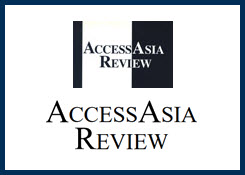From AccessAsia Review Vol. 3, No. 1 (Out of Print)
Weapons Proliferation and Export Controls in the Former Soviet Union
Implications for Strategic Stability in Asia
This paper provides a detailed discussion of the legal and institutional bases of controls set up by Russia and other states of the FSU to regulate the transfer of WMDs, advanced conventional weapons, delivery systems, and related technologies. The paper examines the salient weapons transfers by Russia to China and India and the overall impact of these transfers on the strategic stability of Asia. It then assesses the state of current U.S. assistance to Russia and the FSU and identifies the scope for enhancing U.S. and Western assistance as well as the inherent limitations in that process. Finally, specific areas for future research are pointed out.
Though the curtain came down on east-west confrontation with the end of the Cold War, consensus on the agenda of east-west cooperation and the yardsticks of its measurement have proved to be no less contentious. Russia and the former Soviet republics are embarked on an arduous journey of transition. State institutions designed for centralized coordination and control are being restructured to respond to a democratic form of governance and free-market based economy. The disappointing performance of the civilian sector has increased pressure on the national leadership to set up production and export of military-relevant goods and technologies, as these states still enjoy residual comparative advantage in select military sectors. At the same time, the states of the former Soviet Union are not only sensitive to the dangers posed by unrestrained proliferation of military-relevant goods and technologies, they are also bound by the commitments undertaken by joining international nonproliferation regimes.
It is within the above context that this paper provides a detailed discussion of the legal and institutional bases of controls set up by Russia and other states of the FSU to regulate the transfer of WMDs, advanced conventional weapons, delivery systems, and related technologies. The paper examines the salient weapons transfers by Russia to China and India and the overall impact of these transfers on the strategic stability of Asia. It then assesses the state of current U.S. assistance to Russia and the FSU and identifies the scope for enhancing U.S. and Western assistance as well as the inherent limitations in that process. Finally, specific areas for future research are pointed out.


